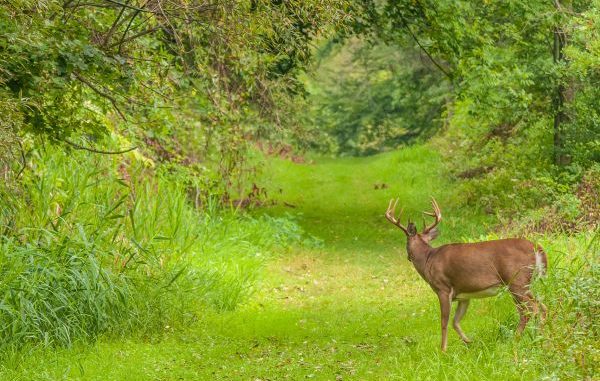
Deer vulnerable between summer and rut, hunter says
A lot of deer hunters don’t count on much during that transition period between the time whitetails leave their early season patterns and the rut cranks up, but that’s when South Carolina hunter Lucas Board expects to have his best chance of the season at a nice buck.
“It can be a tough time, but I believe deer are more susceptible during that time than any other time of the season,” said Board, who runs Field and Fin Adventures (336-259-8300) in North Myrtle Beach, S.C.
The key for Board is that bucks are changing from their late-summer patterns, which are centered in most areas on agricultural offerings, and having to find another primary food source.
And they aren’t yet in the rut, so they’re not scattered out, travelling all over the landscape in search of willing does.
“Deer are coming off a big food source this time of year,” Board said. “A lot of fields are being turned and the soybeans are turning yellow, and if you can home in on where (a buck is) living and travelling, it’s like you’re catching him at a time when he’s confused.
“I’ve always felt that I can kill a deer in that transition period when they’re going from the fields to another food source.”
Board starts by looking for a secondary food source that deer will turn to when the corn, beans and peanuts are gone.
“If he’s been living in a swamp and going to a soybean field to feed and the beans have turned yellow, then I want to find a place in between the two where he’s going to start feeding,” the hunter explains. “I want to find his new primary food source and pattern him on that.”
This is when Board relies on cool-season food plots planted late in the summer.
“A little, small, back field — maybe a food plot planted in something that’s just starting to produce, like oats or clover — if you can key on a place like that where he’s feeding, you can kill him,” he said.
Board doesn’t start hunting buck sign until much later, just as the rut approaches.
It’s a function of the kind of deer herd in his home area.
“In the Midwest, where they don’t have as many bucks, you can hunt buck sign (earlier), but here we’ve got so many bucks, you see a scrape the size of a car hood and it might have been made by an overzealous 4-pointer,” he said. “You know they’re starting to think about the rut, they’ve got it on their minds, but you know they’ve got to eat and drink every day — and that’s how you hunt them.”


